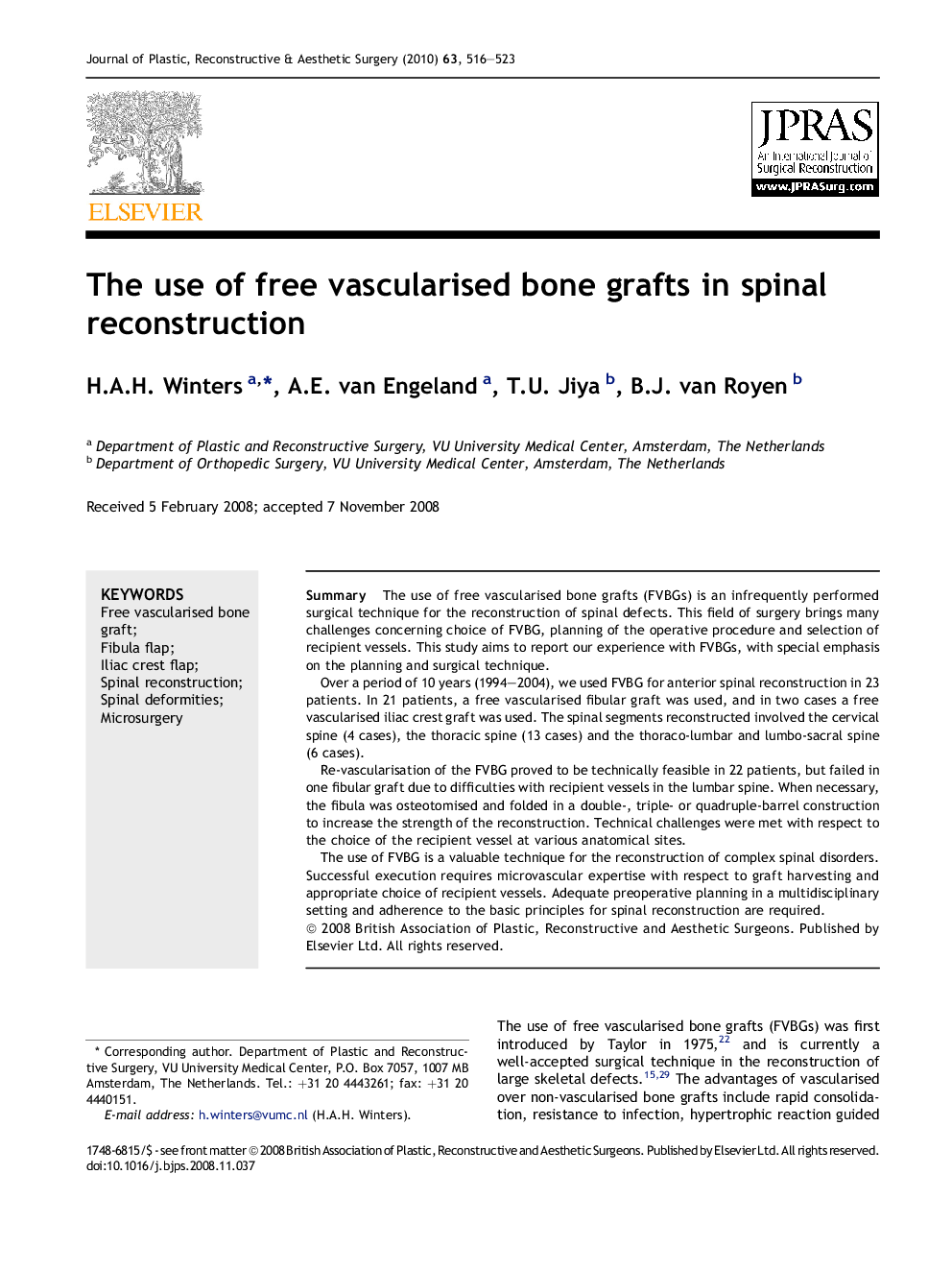| Article ID | Journal | Published Year | Pages | File Type |
|---|---|---|---|---|
| 4119875 | Journal of Plastic, Reconstructive & Aesthetic Surgery | 2010 | 8 Pages |
SummaryThe use of free vascularised bone grafts (FVBGs) is an infrequently performed surgical technique for the reconstruction of spinal defects. This field of surgery brings many challenges concerning choice of FVBG, planning of the operative procedure and selection of recipient vessels. This study aims to report our experience with FVBGs, with special emphasis on the planning and surgical technique.Over a period of 10 years (1994–2004), we used FVBG for anterior spinal reconstruction in 23 patients. In 21 patients, a free vascularised fibular graft was used, and in two cases a free vascularised iliac crest graft was used. The spinal segments reconstructed involved the cervical spine (4 cases), the thoracic spine (13 cases) and the thoraco-lumbar and lumbo-sacral spine (6 cases).Re-vascularisation of the FVBG proved to be technically feasible in 22 patients, but failed in one fibular graft due to difficulties with recipient vessels in the lumbar spine. When necessary, the fibula was osteotomised and folded in a double-, triple- or quadruple-barrel construction to increase the strength of the reconstruction. Technical challenges were met with respect to the choice of the recipient vessel at various anatomical sites.The use of FVBG is a valuable technique for the reconstruction of complex spinal disorders. Successful execution requires microvascular expertise with respect to graft harvesting and appropriate choice of recipient vessels. Adequate preoperative planning in a multidisciplinary setting and adherence to the basic principles for spinal reconstruction are required.
